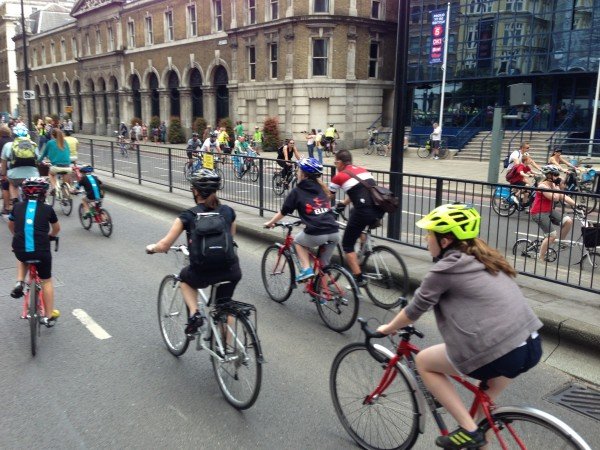Bike Week 2016: Safe commuter cycling


This year’s Bike Week is focusing on people using their bikes to cycle to work. The week encourages over half a million people to join in events, rethink their everyday journeys and switch to cycling as the most convenient way to get around.
Demonstrating the social, health and environmental benefits of cycling, the week aims to get people to give cycling a go all over the UK, whether this be for fun, as a means of getting around to work or school, the local shops or just to visit friends. The 2016 takes place throughout this week (11-19th June) but events still take place through September and beyond. There are hundreds of events planned for 2016.

Safe commuting
The Department of Transport’s THINK! Campaign details advice for both drivers and cyclists of how to use the roads together safely.
Drivers are told:
- Look out for cyclists, especially when turning – make eye contact if possible so they know you’ve seen them.
- Use your indicators – signal your intentions so that cyclists can react.
- Give cyclists plenty of space when over taking them, leaving as much room as you would give a car. If there isn’t sufficient space to pass, hold back. Remember that cyclists may need to manoeuvre suddenly if the road is poor, it’s windy or if a car door is opened.
- Always check for cyclists when you open your car door.
- Advanced stop lines allow cyclists to get to the front and increase their visibility. You must stop at the first white line reached if the lights are amber or red and allow cyclists time and space to move off when the green signal shows.
- Follow the Highway Code including ‘stop’ and ‘give way’ signs and traffic lights.
While the advice to cyclists is as follows:
- Ride positively, decisively and well clear of the kerb – look and signal to show drivers what you plan to do and make eye contact where possible so you know drivers have seen you.

- Avoid riding up the inside of large vehicles, like lorries or buses, where you might not be seen.
- Always use lights after dark or when visibility is poor.
- Wearing light coloured or reflective clothing during the day and reflective clothing and/or accessories in the dark increases your visibility.
- Follow the Highway Code including observing ‘stop’ and ‘give way’ signs and traffic lights.
- THINK! recommends wearing a correctly fitted cycle helmet, which is securely fastened and conforms to current regulations.
Cycling for work
Brake, the road safety charity says that where employees are required to cycle as part of their job, employers should have a robust safe cycling policy covering training, clothing, lighting, risk assessment of routes, pre-ride inspections, punctures, storage, theft and insurance.
The charity adds that it is, however, up to employees to make use of safety measures introduced by their employer, adding that the Royal Mail agreed to provide cycle helmets to post men and women but reports show a 70% non-compliance.
To get your business involved with Bike Week 2016 visit: http://bikeweek.org.uk/us/
Find out more about cycle safety:
This eBook will guide you through some of the key understandings you need to be able to manage driver safety effectively and, at the end, provide a series of free resources you can access to help you ensure your own driver safety management system is robust, legally compliant and in line with industry-accepted good practice.
Download this eBook from Driving for Better Business and SHP to cover:
- Why do we need to manage driver safety?
- Duty of care – a shared responsibility;
- Setting the rules with a driving for work policy;
- Managing driver safety;
- Ensuring safe vehicles;
- Safe journeys and fitness to drive;
- Record keeping;
- Reporting;
- The business benefits of good practice;
- Additional resources
Bike Week 2016: Safe commuter cycling
This year’s Bike Week is focusing on people using their bikes to cycle to work. The week encourages over half
Lauren Applebey
SHP - Health and Safety News, Legislation, PPE, CPD and Resources Related Topics
British Safety Council Wellbeing Conference: Empowering Employees for Success
Infrastructure safety: Learning from Baltimore
Drug and alcohol testing in a UK airport environment





“The charity adds that it is, however, up to employees to make use of safety measures introduced by their employer, adding that the Royal Mail agreed to provide cycle helmets to post men and women but reports show a 70% non-compliance.” The RM did indeed provide helmets for cycling posties, but made them mandatory under their uniform rules, not as part of health and safety at work, because the H&S Executive will not list cycle helmets as personal protective equipment. This is because, despite the widely held belief that cycle helmets are fantastically effective, in reality they don’t seem to… Read more »